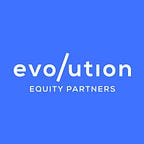Unveiling Product-Market Fit for Early-Stage SaaS B2B Companies
In the ever-evolving landscape of SaaS B2B companies, they all face a crucial challenge: achieving product-market fit (PMF).
What is Product Market Fit?
This elusive milestone represents the harmonious alignment of a product with the specific needs and desires of a defined market segment. For early-stage SaaS B2B companies, navigating the path to PMF can be a daunting task, often shrouded in uncertainty and ambiguity. However, with a strategic approach and a commitment to continuous learning, early-stage companies can unlock the key to sustainable growth and market success.
When I refer to a market, I refer to an existing business environment actively looking for or needing a software product that can help solve a business problem. The target market has many problems waiting to be solved; however, not all problems are big and important enough for the business to pay for a solution.
Finding the fastest path to the big and important market is an art. There is no single formula that can lead to that. However, there are known techniques that can help you accelerate that important discovery.
Demystifying Product-Market Fit
PMF is often described as the ‘holy grail’ of SaaS success, and for good reason. When a product achieves PMF, it resonates deeply with the target audience, solving their pain points and addressing their unmet needs. This alignment drives rapid user acquisition, high retention rates, and a thriving community of advocates. Without PMF, a SaaS product risks stagnation, irrelevance, and, ultimately, failure.
Simply speaking, product-market fit is a point where your target consumers are steadily buying, using, and referring others to your product such that there is a steady rise in your product’s market value and growth.
Emerging from the Shadows: Early-Stage PMF Strategies
The pursuit of PMF becomes particularly challenging for early-stage companies as they grapple with limited customer traction and a lack of direct feedback from paying customers. However, this stage also presents opportunities for early adopters and potential evangelists. Here are some actionable strategies to navigate the path to PMF:
1. Conduct Rigorous Market Research:
Delve into the world of your target audience, understanding their pain points, daily workflows, and existing software solutions. Conduct in-depth interviews with potential customers and salespeople in the market, do surveys, and focus groups to gather valuable insights.
2. Embrace the MVP (Minimum Viable Product):
Build a stripped-down version of your product, focusing on core features that address the most pressing pain points of your target audience. Release this MVP to a select group of early adopters and gather feedback.
Sometimes, you can just create a few screenshots or use an interactive UI experience platform like Figma to initiate a conversation around the business problem you want to solve.
3. Engage with Potential Customers Directly:
Attend industry events, participate in online communities, and connect with potential customers on a personal level. Engage in discussions, seek feedback, and gather insights into their expectations for your product.
Having a booth at an industry event where you can present your product, even just screenshots of it, can be very helpful at the early stage. At an industry event, you have the opportunity to engage with potential customers and learn more about the high-priority problems they are looking to solve. If you are short on budget to support a stand, you can invite relevant people for dinner to learn.
4. Leverage Feedback Platforms:
Utilize in-app feedback mechanisms or third-party platforms to collect ongoing feedback from users. Encourage active participation and address their concerns promptly. To avoid mistakes, you should validate with what platform your target customers engage with.
5. Partner with Influencers:
Collaborate with thought leaders and influencers in your industry. Share your product concept with their audience and gain valuable insights.
As each individual may have a different opinion, don’t rush to implement each and every feedback in your product. Collect the feedback and ‘zoom out’ to find that common denominator.
6. Measure Success Metrics:
As you start to offer the product to customers, track key metrics such as user acquisition, retention rate, customer engagement, positive word-of-mouth, and market demand. These indicators can provide clues about the alignment of your product with the market.
From the very first release of your software, include in-product analytics so you can learn how people are using your product and where they find value. This is the most important and unbiased feedback you can collect from your users.
7. Adapt and Iterate:
Continuously refine your product based on feedback and market trends. Be willing to pivot and adapt to better meet the needs of your target audience.
Remember that at the early stage of your business, your goal is to find the fastest and easiest path to meet the market’s big and important needs.
8. Embrace the CEO’s Role:
As a CEO, you should actively engage with potential customers, participate in beta programs, and gather direct feedback. This hands-on approach can provide invaluable insights.
Navigating the Crossroads: Achieving PMF and Unlocking Growth
Achieving PMF is an iterative journey, requiring continuous learning, adaptation, and a willingness to experiment. By implementing the abovementioned strategies, early-stage SaaS B2B companies can navigate the path to PMF and unlock the potential for sustainable growth and market success. Remember, PMF is not a destination but an ongoing process of refinement and adaptation. Embrace the learning curve, continuously seek feedback, and never stop innovating.
Written by: Yuval Ben-itzhak
